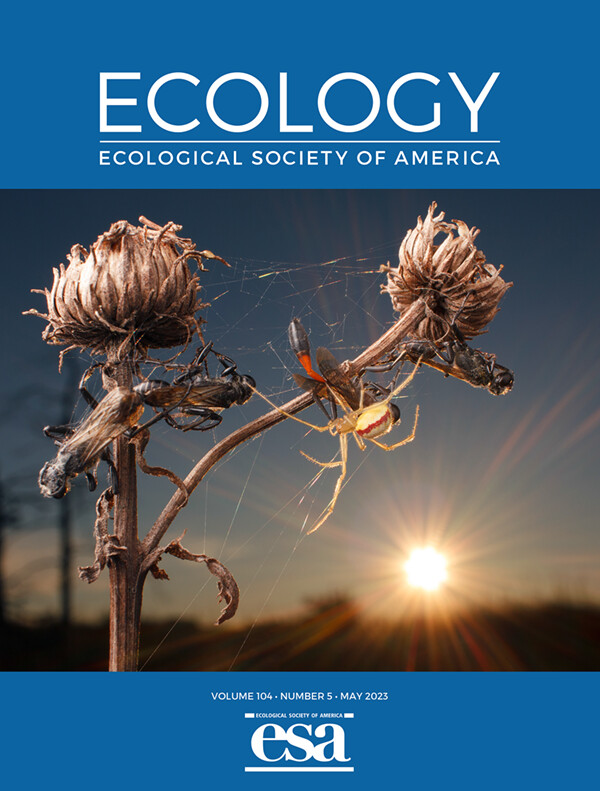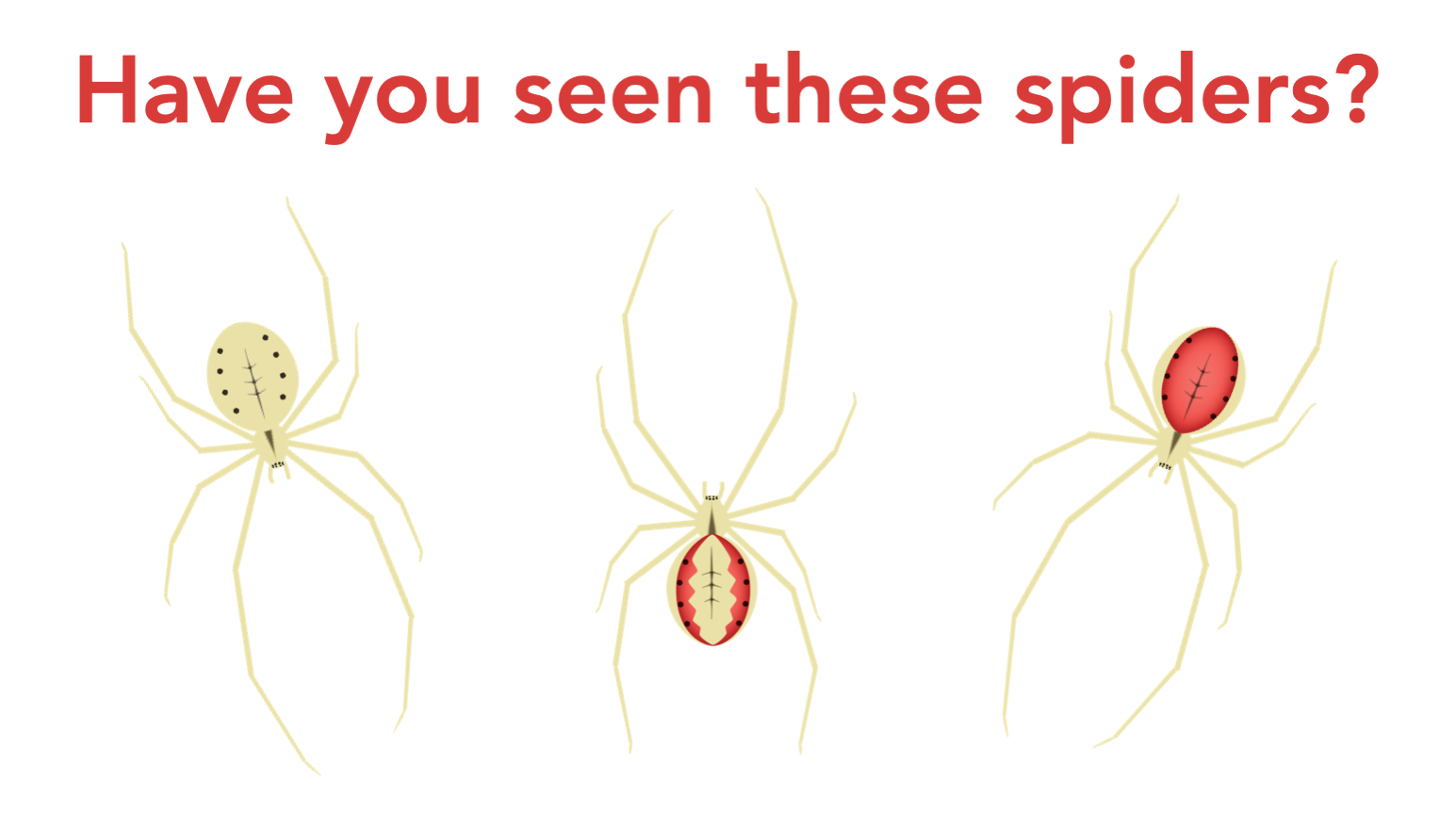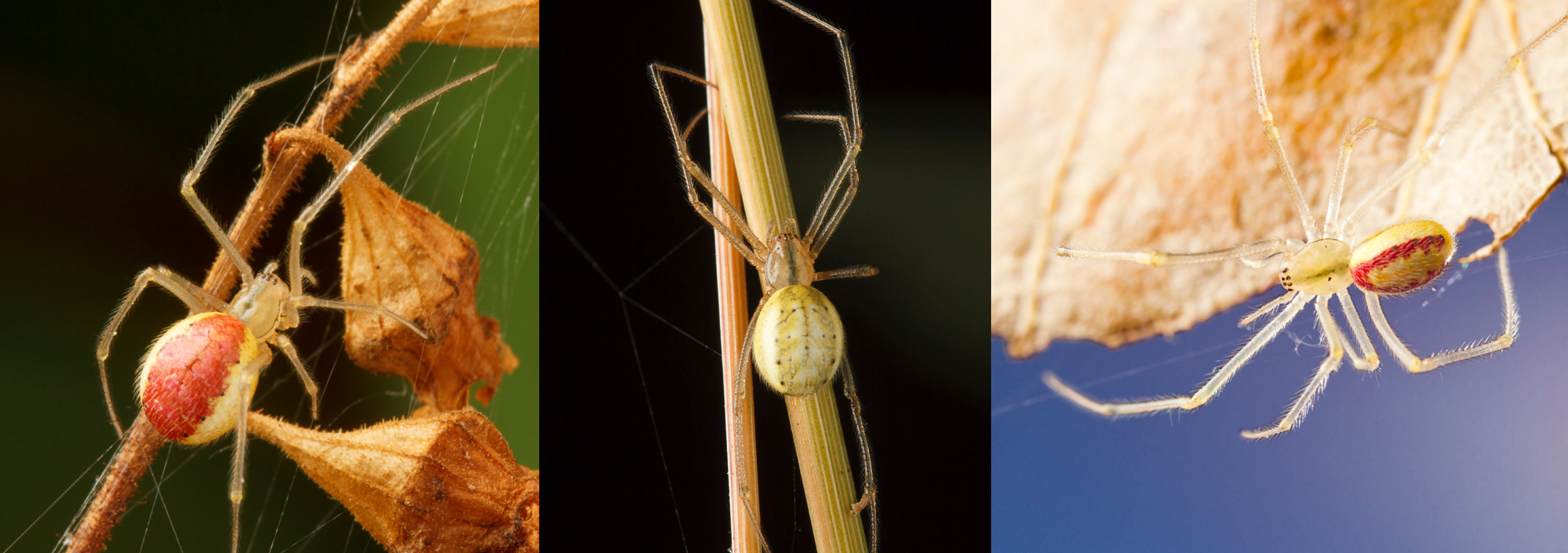Latest News:
We recently held livestream about our candy-striped spider project hosted by Travis McEnery (of the Spiders in Your House youtube channel)! You can watch the recording any time to learn more about these spiders and how to contribute to our iNaturalist project.
Want to learn how to take better photos of spiders (or other ‘bugs’)? Check out the recording of the recent spider photography workshop hosted by our friend & colleague Sebastian Echeverri!

New publication in Ecology!
Our first research paper about the foraging behaviour and diet of candy-striped spiders in North America was recently published in the journal Ecology (and featured on the cover!). Check out this blog post for the story behind the paper and links to the fully open access text and data.
#SpiderHunters is a community science project tracking the location, seasonality, and diet of candy-striped spiders in North America.

Candy-striped spiders (Enoplognatha ovata and Enoplognatha latimana) are cobweb weaving spiders in the family Theridiidae (the same family as black widow spiders). Originally from Europe, they were likely introduced to North America some time in the early 1900s.
These spiders come in three colour forms:

They are commonly found hunting on small webs under flowers, or guarding their egg sacs in rolled up leaves. The goal of the #SpiderHunters project is to document the range and seasonality of these spiders in North America, the plants they are associated with, and the kinds of prey they hunt.

Because they often hunt on flowers, candy-striped spiders capture a variety of insects that feed on nectar, including pollinating bees and flies. We don’t yet know whether these introduced spiders have an impact on pollinator populations in North America.
How to participate:
Help us learn more by taking photographs of any candy-striped spiders you find. Photos that include a prey item or the plant the spider was found on are particularly encouraged, but all observations will contribute valuable data. If you post your photos on iNaturalist they will automatically be added to the Spider Hunters project! If you prefer not to use iNaturalist, you can submit photos by email to [email protected]. You can also spread the word and share your observations on social media using the #SpiderHunters hashtag.